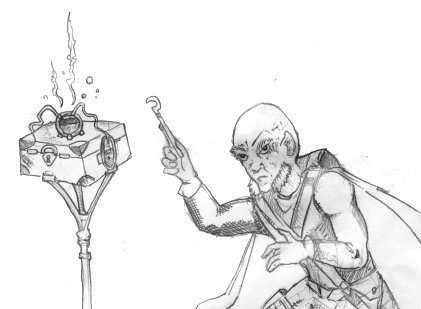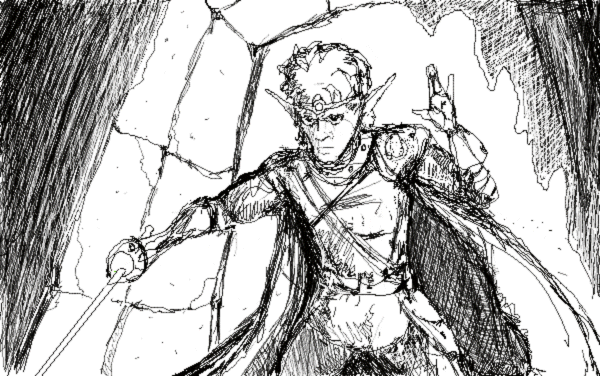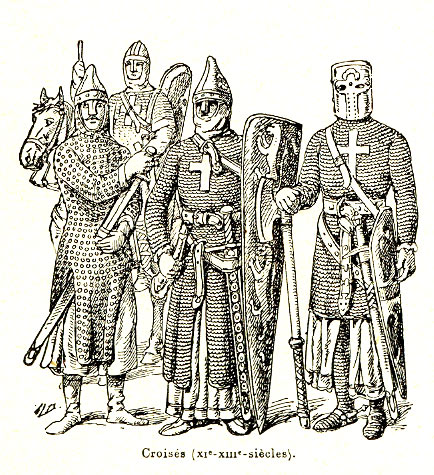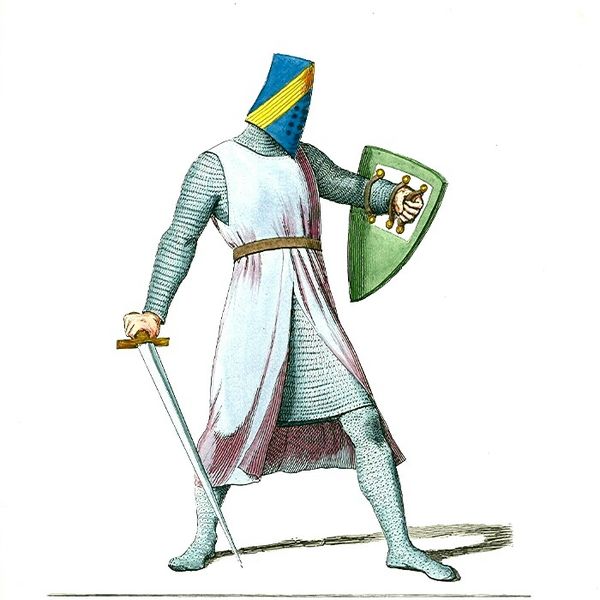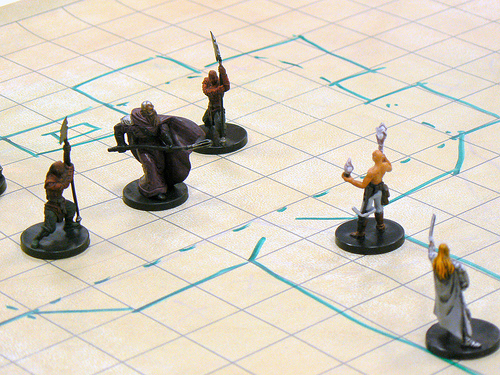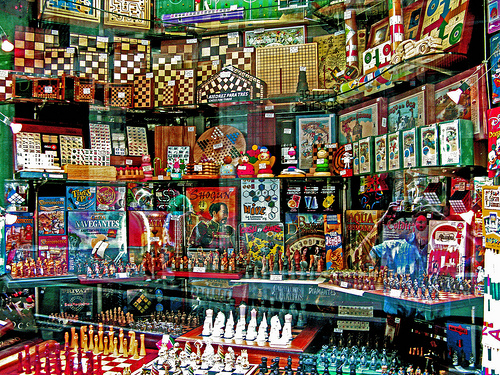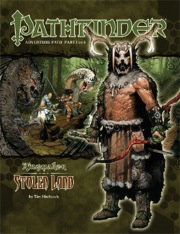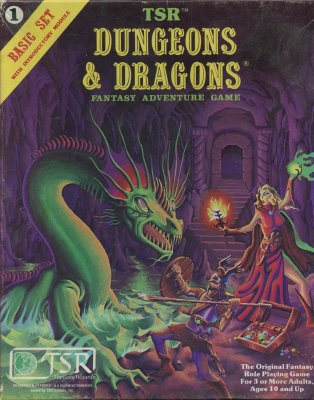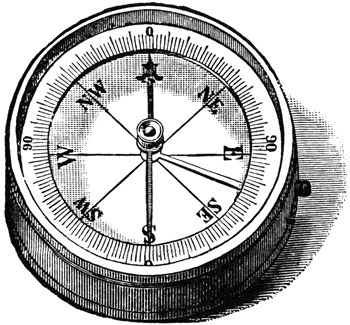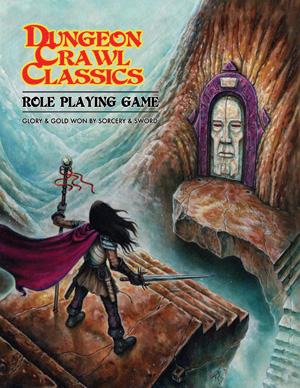 This is the third installment in my weekly series of looking at each of the Dungeon Crawl Classics RPG character classes. The first week I looked at the warrior and last week I looked at the thief. Be sure to check those articles out as well! This week I am taking a closer look at the dwarf character class.
This is the third installment in my weekly series of looking at each of the Dungeon Crawl Classics RPG character classes. The first week I looked at the warrior and last week I looked at the thief. Be sure to check those articles out as well! This week I am taking a closer look at the dwarf character class.
The Class
Dungeon Crawl Classics RPG returns to the mechanic of the case of the demi-human characters being your class, as well as your race. Elves, Dwarves, and Halflings are both race and class. In the Dwarf’s case he is very much like the warrior class with a few features to make him unique.
The DCC RPG dwarf is quite true to what I would consider a traditional feel for a dwarf in fantasy RPGs. They love the sight of treasure, short, stout, and strong, albeit wild, fighters. They live below the surface and tend to have excellent martial skills or craftsmen.
Dwarves start with a d10 hit dice, putting them a little below a human warrior, but still towards the top of the stack. Dwarves prefer battling with a weapon and shield and have a rather broad list of weapons they are trained in. They are free to wear whatever armor they can afford.
The same three alignments are available to the dwarf as the other character classes. The rulebook covers what type of dwarf might choose which alignment.
Dwarves have similar attack modifier mechanics as the warrior class does. They receive a deed die that they roll with each attack. This roll on the deed die applies to the attack and damage rolls and will vary depending on level which determines the deed die. At first level the dwarf would roll a d3 and add the result to attack and damage. As the dwarf levels, this die increases in the number of sides.
Also like the warrior the Dwarf can attempt a Mighty Deed of Arms. This allows them, like the warriors, to attempt special maneuvers during combat that succeed based on the value of the deed die. I am a big fan of this mechanic which I explain in my earlier warrior post. Be sure to check that post out for why I am a huge fan of the Mighty Deed of Arms.
Next up we have the sword and board feature. Dwarves like to fight with a shield and a weapon. If a dwarf fights with a shield the dwarf gains shield bash as a second attack – even at first level. The attack with the shield uses a lesser die to hit and does a small amount of damage, but I like the flavor. A Mighty Deed of Arms can be used with the shield bash.
Dwarves of course have infravision due to their time spent below the surface. They also have the slow movement speed of 20′.
Due to their time spent underground Dwarves have a list of underground skills allowing them bonuses to several types of skill checks when made underground. Another interesting feature is that they can smell gold and gems and determine which direction they are in depending on the amount of gold or gems near.
Finally, the dwarf can apply luck to one specific kind of weapon as the warrior does. They also start the game knowing the dwarven racial language.
My Impression
I find the Dwarven class in Dungeon Crawl Classics RPG really hit the right feel for dwarves for me. I do not mind that they made the race a character class that predefines its role. Sure, we might not see Dwarven Wizards or Rogues, but those should be fairly rare to begin with. The class as presented in DCC RPG does a good job of representing the typical dwarf.
Much like the warrior, the Mighty Deeds of Arms is a very fun mechanic. It works equally well with the Dwarven class. It also allows a Dwarven character many options.
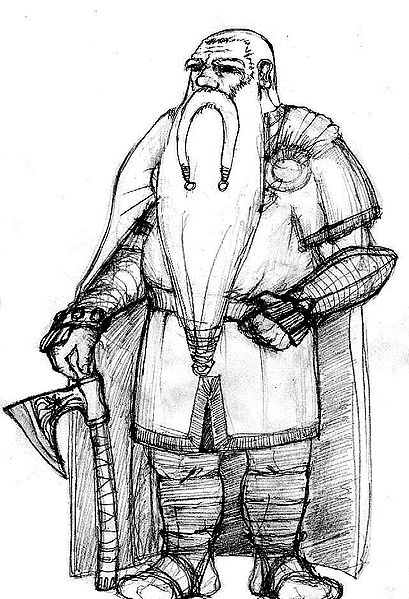 From Forgotten Realms novels I have always had a fondness for Thibbledorf Pwent, a dwarven beserker. In D&D 3.x games or Pathfinder games I have had a hard time emulating this type of dwarf. I think with the Mighty Deeds at Arms and a judge I trusted that I could build a dwarven beserker with less trouble.
From Forgotten Realms novels I have always had a fondness for Thibbledorf Pwent, a dwarven beserker. In D&D 3.x games or Pathfinder games I have had a hard time emulating this type of dwarf. I think with the Mighty Deeds at Arms and a judge I trusted that I could build a dwarven beserker with less trouble.
The other mechanic I really like from the Dwarven class is the sword and board feature. I always think of dwarves in close formation, shield in one hand, hammer or axe in the other. The sword and board class feature helps keep the shield useful for more than just an increased AC and allows the Dwarf to use it in battle to cause damage. I like the feel this gives the DCC RPG dwarf.
I have judged for a couple of dwarves in actual play. The characters seemed to do well and with the use of Mighty Deeds at Arms were able to do some excellent things. I recall one battle where the two dwarves formed up a shield wall to help cover a retreat.
The Dwarven character class is yet another class in DCC RPG that hits the right notes for me. The character class feels like what a dwarf should be in fantasy RPGs!
Next Week
So far I have looked at the Warrior class, the Thief and now this week the Dwarf. What would you like to see me look at more closely next? Post here in the comments or on either Google+ or Twitter and let me know which class I should turn to next!



